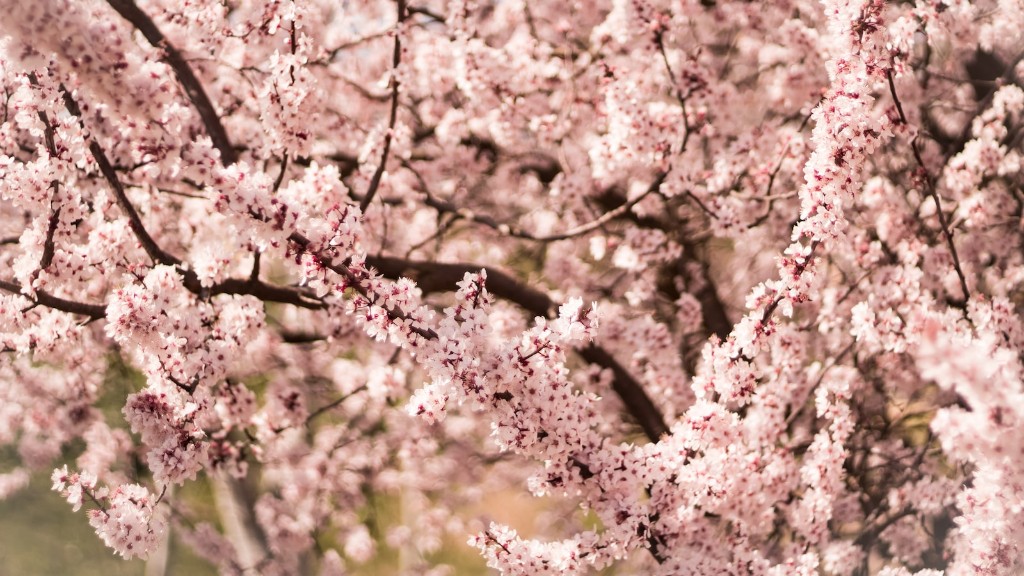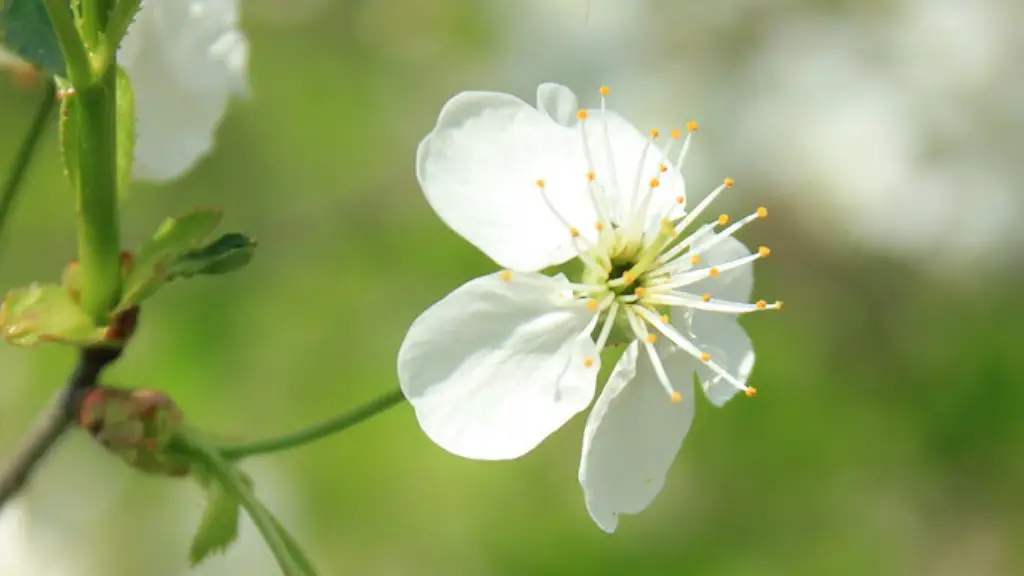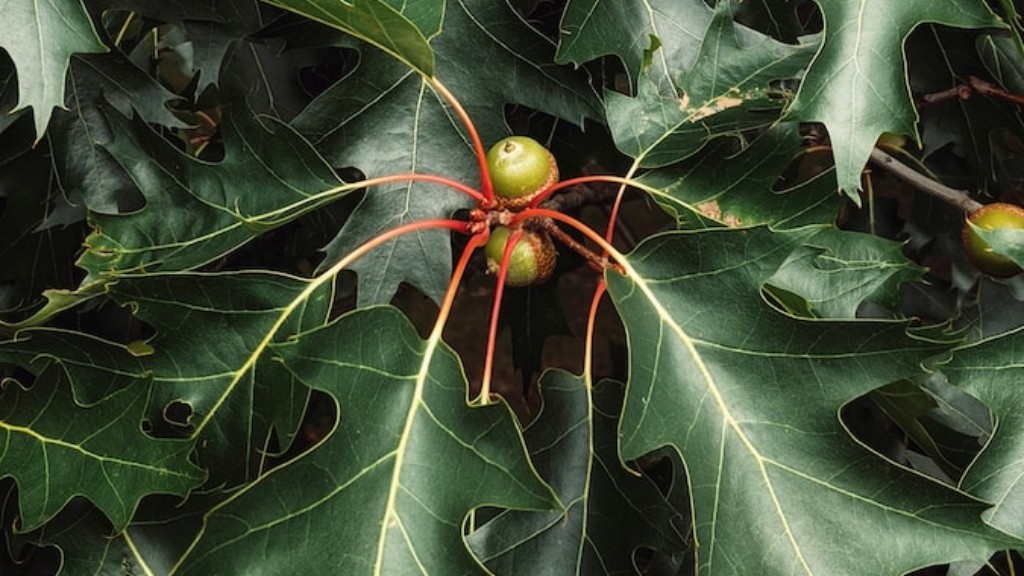Beneath its thick, green outer husk lies a creamy, soft, and flavorful edible treasure; the avocado, beloved by many and treasured for its many health benefits. But why exactly are avocados sometimes seen rolling off the tree?
Firstly, avocados do not ripen on the tree the way other fruits do. Instead, they actually have to be taken from the tree before they reach full ripeness and then allowed to mature at room temperature before they can be considered truly ready to eat. Therefore, if avocados remain on the tree for too long, they may become overripe and, ultimately, fall off in order to make room for new growth.
Secondly, avocado trees rely on winds and other pollinators to spread their pollen in order to ensure that the crops stay fruitful. Occasionally, strong gusts of wind can be so powerful that they cause mature avocados to fall off the tree. This is especially true in Mediterranean climates.
Thirdly, factors such as disease and pests can also cause avocados to fall off the tree. Diseased branches are often weaker than healthy ones, and so any pressure, be it from the wind or rain, can push them off the tree, along with the attached avocados. Additionally, the presence of pests such as the avocado lace bug can stunt the tree’s growth and inhibit the production of new fruit, forcing the avocado to fall prematurely.
Furthermore, the size and shape of the avocado can affect its chances of staying on the tree. The larger, oblong-shaped avocados typically stay on the tree far longer than the smaller, rounder ones due to the physical shape, which provides more surface area to cling to the stem. On the other hand, avocados with a rounder or pear shape have difficulty gripping the stem and, as a result, can easily be pushed off by wind or other external forces.
Finally, pruning practices can have a positive effect on the number of avocados that remain on the tree. Pruning helps to shape the tree and limit the number of branches on the tree, which eliminates any unnecessary stress from the crop. Additionally, pruning removes dead or diseased branches, which would otherwise cause the avocados to fall off.
Expert Advice for Avocado Producers
In order to reduce the number of avocados that are falling off the tree, experts recommend a few strategies. Firstly, they suggest making sure that the orchard is properly fertilized, as doing so can help to boost the nutrition and health of the avocado tree. Secondly, they advise closely monitoring the tree for any signs of pests or diseases, and using the appropriate measures to eradicate the issue immediately.
Thirdly, it is important to ensure that there is an adequate amount of airflow throughout the orchard, as too much stagnant air can encourage disease to spread. Finally, they recommend pruning the tree on a regular basis to ensure that strong branches are being encouraged and weaker branches are removed. Following these strategies can help to improve the health of the tree and, ultimately, keep more avocados on the tree.
Advantages and Disadvantages to Avocados Falling off the Tree
There are both advantages and disadvantages to avocados falling off the tree. On the one hand, the tree has more room to produce new, healthy fruit, which can increase the overall yield of the crop. On the other hand, those extra avocados that fall off the tree will be wasted, as it is not possible to sell an overripe avocado to the consumer. Additionally, the tree may suffer from a nutrient imbalance if too many avocados are being removed at once.
In addition, avocados that fall off the tree can also be a source of food for small animals and birds, providing them with nourishment and helping to limit the amount of food waste that is produced. Although these fallen avocados are not edible for humans, they can still be beneficial in one way or another.
Methods for Reusing Fallen Avocados
Although it is important to ensure that the trees are not losing too many avocados at once, it is important to remember that those that do fall off can still be used in some manner. Firstly, they can be repurposed as compost or fertilizer, providing the tree with the nutrition that it needs. Secondly, they can be chopped up and used to make guacamole or avocado-based skin care and hair treatments.
Thirdly, if the avocados are ripe and soft, they can still be eaten, as long as they are cooked properly. Grilled and mashed avocados are a popular way to prepare this nutrient-dense fruit, and the leftovers can be used to make sandwiches and salads. Finally, avocados can also be dried and ground down into a powder, which can then be added to smoothies, shakes, and other beverages to give them an extra boost of flavor and nutrition.
Regional Factors for Avocado Falling Off the TreeThe rate at which avocados fall off the tree can also vary from region to region. Avocado producers in tropical climates, for instance, tend to lose fewer avocados each season due to the fact that they can remain on the tree far longer, as the tree produces a longer and more stable flowering period. On the other hand, regions with more arid or temperate climates may see an increase in falling avocados due to the fact that the trees do not flower or fruit as consistently as those in tropical or subtropical climates.
In addition, the amount of wind that is present in the orchard can also impact the rate at which avocados fall off the tree. Avocado producers in regions with strong winds may find themselves losing more avocados each season than those in regions with minimal winds. It is therefore important for avocado producers to be aware of the environmental conditions of their orchard before attempting to start their own crop.
Harvest Strategies for Avocado Producers
Once the avocado trees begin to flower and produce fruit, it is important for producers to monitor the trees closely and harvest the avocados at the right time in order to get the best yields. It is recommended that they harvest the avocados when they still have a touch of green at the top and then allow them to ripen at room temperature. If avocados are left on the tree for too long, they will become overripe and, ultimately, fall off the tree.
It is also important for producers to be aware of the size and shape of the avocados in order to determine which ones have the greatest chance of staying on the tree. Avocados that have a larger, rounder shape tend to stay on the tree far longer than their smaller, more elongated counterparts.
Finally, in order to limit the amount of falling avocados, producers should also be sure to prune their trees on a regular basis. Pruning helps to shape the tree and eliminates unnecessary stress, which can help to keep the avocados on the tree for a longer period of time.



